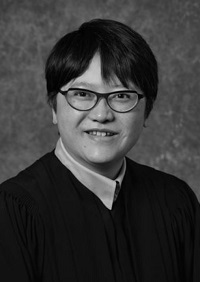In Minnesota, there are nearly 300 district court judges who preside over matters in ten judicial districts. While the Minnesota Rules of Court provide attorneys with significant information applicable to court proceedings, each judge may have his or her individual preferences with respect to motion practice and courtroom conduct.
In an effort to assist attorneys who may be appearing before a judge for the first time, the MSBA Civil Litigation Section Governing Council provided all district court judges with a brief survey. The responses that we received are organized on the right by judicial district and then alphabetically by judge’s name. We hope you find these responses to be helpful in your preparation for district court appearances.
For information about this project or to report an error in any judicial directory listing, contact Kara Haro, MSBA staff liaison to the Civil Litigation Section.
Get your second district guide for Amazon Kindle
here.
Second Judicial District Judges | Courtroom Preferences
Starr, Nicole

District Court Judge
Counties: Ramsey
State Court Bio: View Bio
Contact with chambers:
- Set forth your preferred method to contact chambers (telephone, email, etc.). e-mail
- To whom may attorneys direct scheduling/logistical questions? law clerk
- To whom may attorneys direct substantive questions? law clerk
Motion practice:
- Set forth your practices and procedures for scheduling motion hearings. Set a pre-trial order with dates
- Do you accept telephone calls from attorneys to rule on discovery disputes that occur during depositions? yes
- How much time do you allot for motion hearings? as much as the parties need
- Set forth your practices and procedures with respect to attending a hearing by telephone or video conference. I will use Zoom or ITV for hearings
Written submissions:
- Do you want to receive paper courtesy copies of the parties' written submissions? If you do, set forth the number and preferred format of courtesy copies and identify any document type you do not want to receive. Yes, courtesy copies are helpful.
In-court proceedings:
- Set forth your practices and procedures with respect to attorney's use of technology in the courtroom and during trial. Technology in the courtroom is helpful for the factfinder.
- Set forth your practices and procedures with respect to the submissions of additional legal authority or other materials at or after oral argument. I set a deadline for further submissions. I appreciate any relevant information the Parties may submit.
- Do you permit parties to bifurcate oral argument so different attorneys address different legal issues? Yes.
Pretrial procedures:
- Set forth your practices and procedures for handling motions in limine. The parties should see which if any motions, they mutually agree. The court should be informed of the agreement. All other arguments occur at a motion hearing.
- What is your schedule for a typical trial day? 9-4:30
- Set forth your voir dire procedures. The court asks a set of questions and each party may ask further questions.
- Set forth your practices and procedures with respect to courtroom decorum, including movement in the courtroom, use of a podium, whether attorneys should sit or stand, and how to address witnesses. The parties should adhere to the Rules of Decorum. The parties should stand when addressing the court (unless told otherwise), the parties should ask permission before approaching, and the witnesses should be referred to by last name and title.
- Do you impose time limits with respect to opening statements and closing arguments? No, unless specifically addressed in the motions in limine.
- Set forth your practices and procedures for handling objections. The parties state the basis for objection and I rule.
- May attorneys obtain daily transcripts during trial? If so, what procedure should attorneys follow? Yes, speak to the court reporter prior to the hearing.
- Set forth your practices and procedures with respect to attorney requests to contact jurors at the conclusion of trial. After the conclusion the parties are free to speak with jurors, unless otherwise instructed.